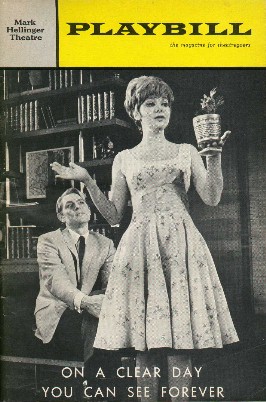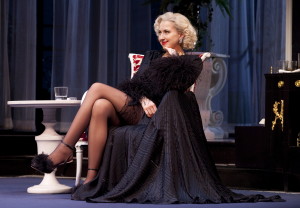It’s been 25 years since Larry Kramer took NY theater by storm with his seminal play The Normal Heart, simultaneously an indictment of those who turned a blind eye to AIDS in the epidemic’s infancy as well as a cry for someone to, as the character Dr. Ellen Brookner implores, “Do something!” Agitprop tends to date quickly, but in this sincere, simplistic revival currently playing the Golden Theater, Kramer’s play and message feel timelier than ever.
In short: The Normal Heart ripped out my heart and stomped on it in the best possible way. This revival is the sort of production that reaffirms why I love live theater. To call this galvanizing experience a must-see would be the grossest of understatements. The play is set between 1981 and 1984, and offers a no-holds barred look into the earliest days of the disease: the fear, the uncertainty and, most aggravatingly, the blind-eye the government, press and pharmaceutical companies turned toward the issue.
Joel Grey directed the high acclaimed benefit reading that inspired this production earlier in the fall. It was producer Daryl Roth who made this Broadway engagement happen, and for that we should all be most grateful. Since Mr. Grey has been busy in the hit revival of Anything Goes, George C. Wolfe has stepped in to stage the production. Even with limited rehearsal time and a brief preview period, The Normal Heart features one of the most exceptional ensembles in recent seasons. I found myself impressed across the board by the powerful performances of each and every actor onstage.
At the center of the play is Joe Mantello, as Ned Weeks (based on Kramer himself) in an exhaustively nuanced performance. Mantello has spent the last fifteen years or so as a director, but with all due respect, I think he’s a far better actor than director; his performance here only shows what Broadway has missed since his last appearance in Angels in America. John Benjamin Hickey provides the play’s emotional center as Ned’s lover Felix, who wastes away before our eyes during the play’s second act.
Lee Pace and Jim Parsons make stellar Broadway debuts as fellow founders of a GMHC-type foundation. Also on hand are Patrick Breen, Luke MacFarlane, Mark Harelik, Richard Topol, Wayne Alan Wilcox and the lone female, Ellen Barkin as Dr. Brookner, the stern but compassionate doctor who finds herself the only one of her profession responding to the illness. Barkin is also making a Broadway debut, and is sensational in her second act tirade (which received the kind of showstopping applause you usually expect across the street at Billy Elliot). To play favorites would be criminal, because they all are so utterly spectacular.
This marks the first time in my theatregoing experience that I’ve witnessed an audience leaving a show in total silence, as though departing a church service. But that’s most appropriate, as the play’s final moments project the names of thousands of victims over the stage and walls of the theatre; The Normal Heart is now not only a call to action, but also an elegy for the 35 million people the world has lost to AIDS in the last thirty years.
On the sidewalk, a young man handed me a letter with some startling statistics on the nature of AIDS in contemporary America. Despite progress that has been made, the disease is still incurable and is still an international pandemic. The play onstage reminds us all how terrifying it once was, but the reality is, there is still a long road ahead.
The Normal Heart is at the Golden Theater until July 10 – a strictly limited engagement. Do not miss this.


